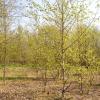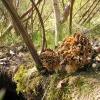
01-05-2017 12:08
 Tanja Böhning
Tanja Böhning
Bonjour, Nous avons une Morchella dans une sabli�

30-04-2017 16:08
Jan KnuimanHello, We found these very small cups (diameter c

30-04-2017 17:48
 Andgelo Mombert
Andgelo Mombert
Bonsoir à tous,Récolte sur Picea ou Abies, à la

28-04-2017 20:14
Till LohmeyerHi, ascofriendsdoes anybody have access to the fol

19-04-2017 15:26
Gernot FriebesHi again,here is another fungus that puzzles me a

23-04-2017 21:26
 Bernard CLESSE
Bernard CLESSE
Bonsoir à tous,Voici ce que je pense être Cistel

15-03-2017 08:41
En madera de RetamaNo tengo ni idea de por donde m

25-04-2017 20:54
Hi to allThis fungus was collected at Somiedo (135

25-04-2017 18:43
 Blasco Rafael
Blasco Rafael
Hola a ver si me pueden ayudar con esta muestra mu

Bonjour,
Nous avons une Morchella dans une sablière. Comme arbres, ill n´y a que des Salix et Betula.
Est-ce que vous connaissez des Morchellas dans ces biotopes?

Hello Tanja,
I am not a specialist in Morchella - so please take my answer with caution.
Anyway, I think that your collection should be Morchella vulgaris - this is the form that is dealt with as M. spongiola in the paper of Kellner & al., as one of three species of the Morchella esculenta-complex growing in Central Europe. M. vulgaris is darker and longer staying dark compared with exculenta (crassipes) and americana (esculenta) - and the species with the least tree specifity (esculenta mainly growing with Fraxinus and americana with Populus). Thanks to Pierre-Arthur Moreau who gave me some information.
I am looking forward to other opinions.
Best regards from Lothar


